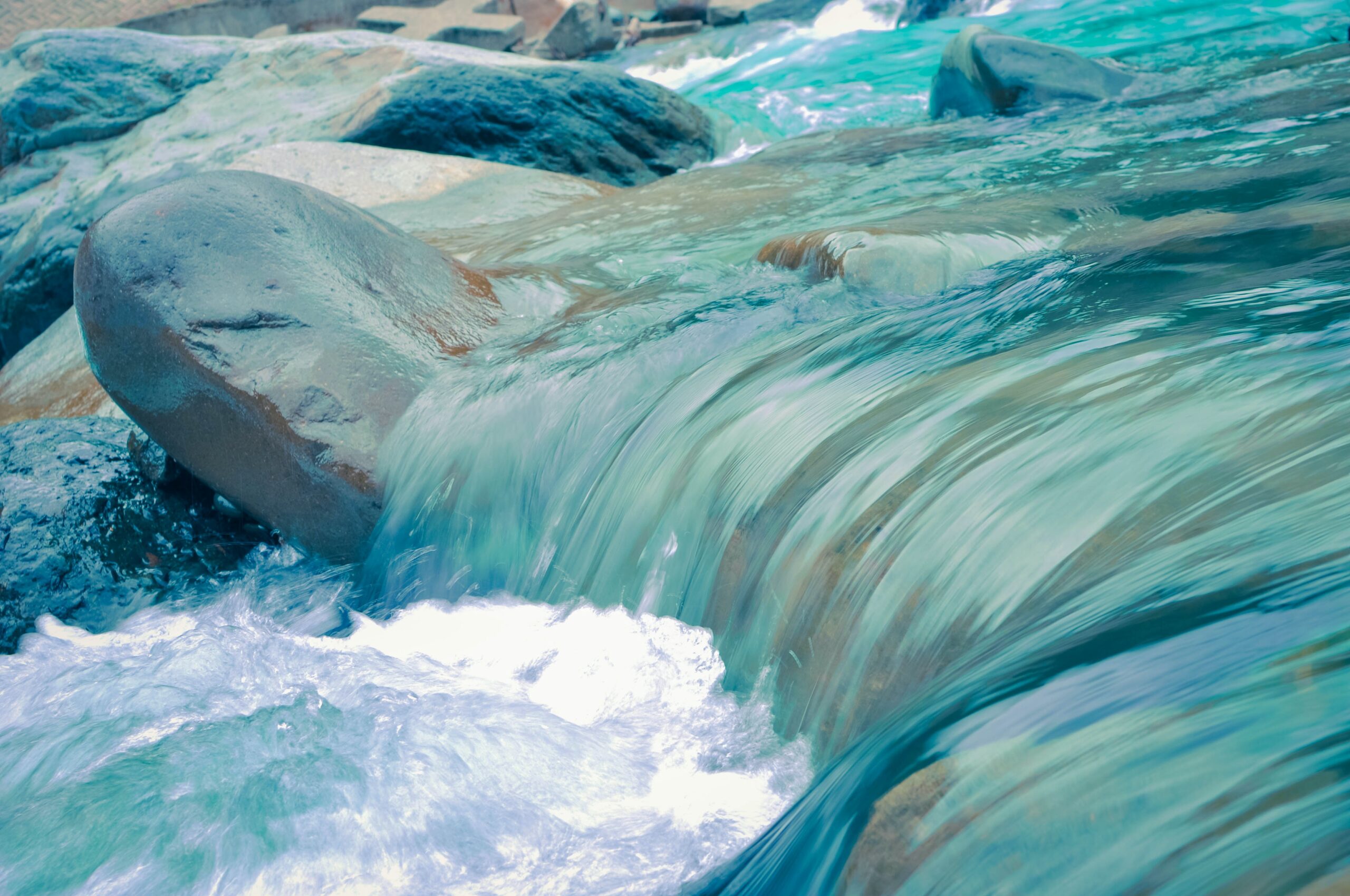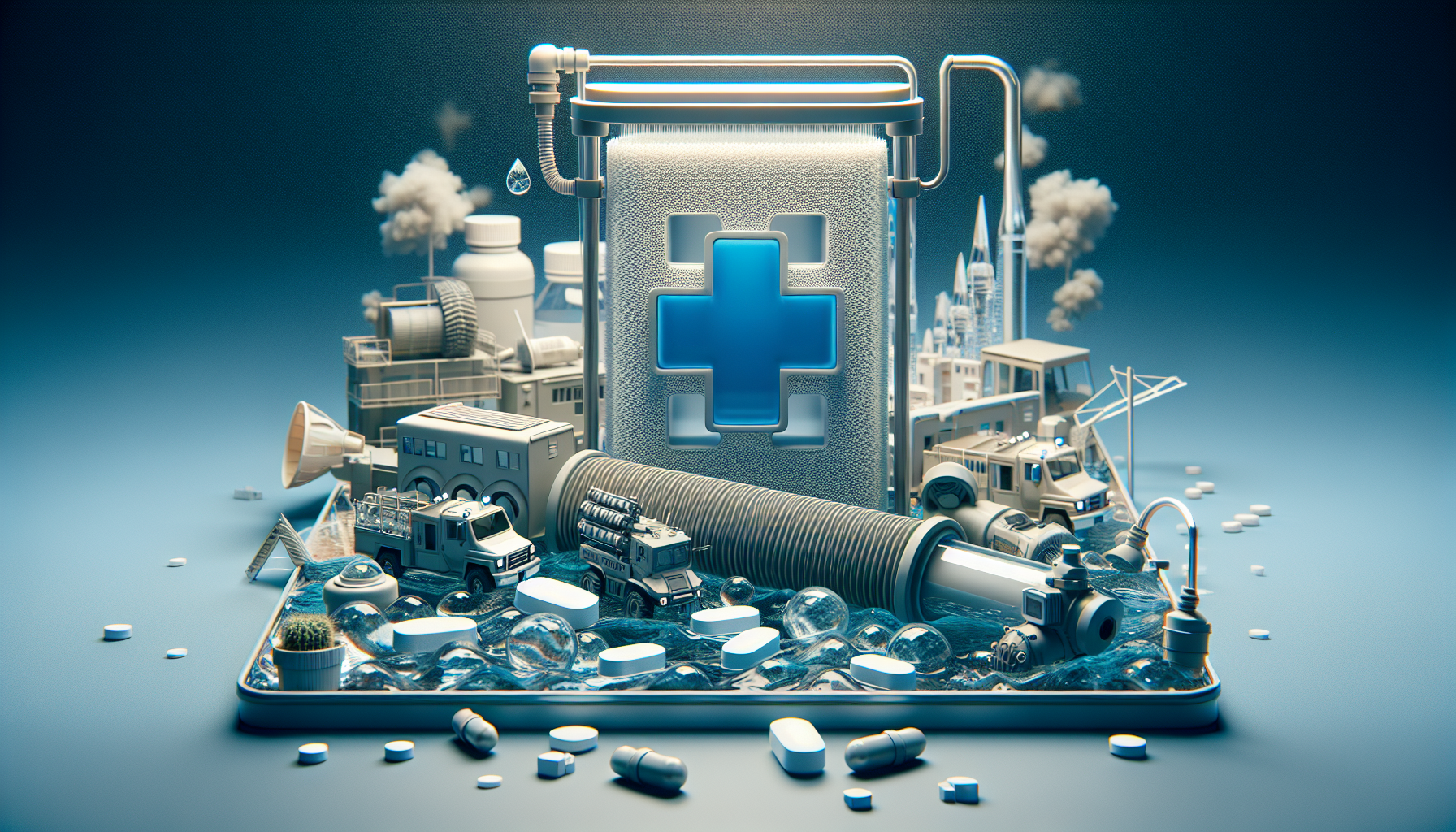In times of emergencies, it is crucial to have a good understanding of water purification methods. Access to clean and safe water becomes even more vital during challenging situations. This article explores essential information about water purification in emergencies, offering you valuable insights on how to ensure the water you consume is free from harmful contaminants. Whether it’s a natural disaster or any other unforeseen event, equip yourself with the knowledge needed to secure clean water for you and your loved ones.
Methods of Water Purification
When it comes to ensuring the safety of your drinking water in emergencies, there are several methods of water purification that you can rely on. These methods include boiling, chemical treatment, filtration, UV treatment, and distillation. Each method has its own unique advantages and disadvantages, but they all strive to eliminate harmful contaminants and make the water safe for consumption.
Boiling
Boiling is one of the most common and widely used methods of water purification. It’s a simple and effective way to kill bacteria, viruses, and parasites that may be present in the water. The duration of boiling is an important factor to consider, as water should be brought to a rolling boil and then allowed to continue boiling for at least one minute. This ensures the complete destruction of any pathogens.
To boil water, you’ll need a heat source such as a stove or a campfire. It’s important to have a pot or kettle specifically designated for water purification, as other cooking utensils may contain contaminants that could contaminate the water. Once the water has reached a rolling boil, you can let it cool down before consuming or storing it.
While boiling is an effective method of water purification, it does have certain disadvantages. Boiling requires a heat source and can be time-consuming, especially if you need to purify large quantities of water. Additionally, boiling does not remove chemical contaminants or suspended particles from the water, so it may not be sufficient in all situations.
Chemical Treatment
Chemical treatment is another method of water purification that is commonly used in emergencies. It involves the use of specific chemicals to kill or neutralize harmful microorganisms in the water. Common chemicals used for water treatment include chlorine, iodine, and water purification tablets.
Chemical treatment is generally effective in killing bacteria, viruses, and parasites, but its effectiveness can vary depending on the specific chemical used and the dosage. It’s important to follow the instructions provided with the chemical treatment product to ensure proper usage and dosage. The recommended contact time between the chemical and the water should also be followed for optimal results.
Chemical treatment can be a convenient method of water purification, as it doesn’t require a heat source or any complex equipment. However, it’s worth noting that chemical treatment may not be suitable for individuals with certain health conditions or sensitivities to the chemicals used. It’s always best to consult with a healthcare professional before using chemical treatment methods.
Filtration
Filtration is an effective method of water purification that works by physically removing impurities from the water through a filter medium. There are different types of filters available, including activated carbon filters, ceramic filters, and mechanical filters. Each type of filter has its own unique capabilities and limitations.
Activated carbon filters are commonly used for removing chemical contaminants and improving the taste and odor of water. Ceramic filters, on the other hand, are effective in removing bacteria and protozoa. Mechanical filters, such as those found in water filter pitchers or backpacking filters, can remove larger particles and sediment from the water.
The filtering mechanism of each type of filter depends on its design and the specific filter medium used. However, in general, filters work by allowing water to pass through while trapping contaminants and impurities. It’s important to note that filters have a finite lifespan and need to be replaced regularly to maintain their effectiveness.
Filtration can be a convenient and efficient method of water purification, especially if you have access to a reliable filter. However, it’s important to choose a filter that is appropriate for the specific contaminants you need to remove from the water. Additionally, filters may not be able to remove all types of contaminants, so it’s important to consider the limitations of filtration.
UV Treatment
UV treatment is a relatively new and innovative method of water purification that utilizes ultraviolet light to kill bacteria, viruses, and parasites. This technology works by damaging the DNA of microorganisms, rendering them unable to reproduce and cause harm. UV treatment is highly effective in eliminating a wide range of pathogens.
The effectiveness of UV treatment depends on several factors, including the intensity of the UV light, the contact time between the water and the UV light, and the quality of the water being treated. It’s important to ensure that the water is clear and free from suspended particles or sediments, as these can interfere with the effectiveness of the treatment.
UV treatment has several advantages, including its fast and efficient nature. It doesn’t require any chemicals or complex equipment, making it a convenient option for emergency situations. However, it’s important to note that UV treatment is unable to remove chemical contaminants or improve the taste and odor of water. It should be used in conjunction with other methods of water purification for comprehensive results.
Distillation
Distillation is a method of water purification that involves heating water to create steam and then collecting the condensed steam as purified water. This process effectively removes impurities, minerals, and contaminants from the water, making it safe for consumption. Distillation is particularly effective in removing chemical contaminants.
The distillation process requires a heat source and a distillation apparatus, which typically consists of a boiler, a condenser, and a collection container. The water is heated to create steam, which is then cooled and condensed to form purified water. Distillation requires energy due to the heating process, making it less practical in emergency situations with limited resources.
Distillation is a highly effective method of water purification, as it removes a wide range of impurities and contaminants. However, it’s important to note that the process can be time-consuming and energy-intensive. It may not be feasible or practical in certain emergency situations, especially if there are limited resources available.

Water Sources in Emergencies
In emergency situations, accessing safe water sources is crucial for survival and well-being. Knowing how to identify safe water sources and avoid contaminated ones is essential. Here are some tips to help you navigate water sources during emergencies.
Identifying Safe Water Sources
Safe water sources in emergencies can include treated municipal water supplies, bottled water, and natural sources such as springs, flowing streams, and deep wells. These sources are more likely to have cleaner and safer water. Look for signs of human settlements, as these are often associated with reliable water sources.
If there is a functioning municipal water supply, it’s important to follow any advisories or instructions provided by local authorities regarding its safety. Bottled water is typically safe for consumption, but check for any signs of tampering or damage before using.
When it comes to natural water sources, look for clear water that is free from color, odor, or floating debris. Consider the surrounding environment and potential sources of contamination, such as industrial activities, agricultural runoff, or nearby livestock. If the water source seems suspicious or you’re unsure about its safety, it’s best to err on the side of caution and treat the water before use.
Identifying Contaminated Water Sources
Contaminated water sources can pose serious health risks, especially in emergencies when sanitation and hygiene practices may be compromised. Water sources that show signs of contamination include stagnant or standing water, water with an unusual color or odor, or water located near areas with human or animal waste.
Avoid collecting water from rivers, lakes, or ponds that are visibly polluted or have a strong smell. Be cautious of water sources in areas affected by flooding or natural disasters, as the water may be contaminated with harmful substances.
Alternative Water Sources
In emergencies, it’s important to consider alternative water sources if safe options are not readily available. Rainwater can be collected using clean containers and used for drinking or other purposes. However, it’s important to note that rainwater can also contain contaminants, especially if collected from contaminated surfaces.
Snow and ice can also be sources of water in certain situations. However, it’s crucial to melt and treat snow or ice before consuming it, as they can easily become contaminated during the melting process.
Remember to always treat alternative water sources using one of the various methods of water purification to ensure their safety.

Storage and Collection of Water
Proper storage and collection of water are essential for maintaining its safety and preventing contamination. During emergencies, it’s important to follow these guidelines to ensure the availability of clean drinking water.
Proper Containers
Use clean, food-grade containers to store and collect water. Plastic containers, such as those made from high-density polyethylene (HDPE), are generally safe for water storage. Avoid using containers that held chemicals or other non-food substances, as they may contaminate the water.
Clean the containers thoroughly before using them and rinse them with clean water. Avoid touching the inside of the containers or the rims to prevent contamination. Keep the containers covered to prevent the entry of dirt, insects, or other contaminants.
Hygiene Considerations
Maintaining proper hygiene practices when collecting and storing water is crucial to prevent contamination. Wash your hands thoroughly with soap and clean water before handling water containers or collecting water. Use clean utensils or tools to handle water, and avoid touching water collection surfaces with dirty hands.
Avoid storing water containers near chemicals, cleaning products, or other substances that may contaminate the water. Store water containers in a cool, dry place away from direct sunlight. If using larger water storage containers, make sure they are properly sealed to prevent the entry of contaminants.
Water Collection Techniques
When collecting water from natural sources, it’s important to do so in a way that minimizes contamination. Avoid submerging the collection container directly into the water source, as this can introduce contaminants.
Instead, use a clean cup, ladle, or other utensils to scoop water into the container. Fill the container slowly to minimize the disturbance of sediments or particles in the water. If the water is cloudy or visibly contaminated, it’s best to filter or treat it before storing or consuming it.
Clean any collection equipment after each use to prevent the buildup of contaminants.

Emergency Water Treatment Kits
In emergencies, having access to emergency water treatment kits can be invaluable. These kits typically contain various tools and chemicals necessary for water purification. Here’s what you need to know about emergency water treatment kits.
Contents and Usage
Emergency water treatment kits commonly include water purification tablets, bleach, water filters, and other necessary tools for water treatment. The specific contents may vary depending on the kit, but they are usually designed to provide multiple treatment options and cater to different emergency scenarios.
Water purification tablets are typically used by dissolving them in a specific amount of water and allowing it to stand for a specified period. Bleach can be used to disinfect water, but it’s crucial to use unscented bleach without any additional additives. Water filters can help remove impurities and contaminants from water, providing a reliable method of water purification.
It’s important to familiarize yourself with the usage instructions of each component of the emergency water treatment kit and follow them carefully. Proper usage and dosage are essential to ensure the effectiveness of the treatment.
Long-Term Storage
Emergency water treatment kits should be stored in a cool, dry place away from direct sunlight. It’s important to check the expiration dates of the contents regularly and replace any expired items. Remember to regularly rotate the water purification tablets or other chemicals to ensure their effectiveness.
Additionally, it’s important to periodically inspect the kit for any damaged or leaking containers. Do not consume or use any items from the kit if they appear damaged or compromised.
Availability and Cost
Emergency water treatment kits are available from various sources, including emergency preparedness stores, online retailers, and government agencies. Their availability and cost can vary depending on your location and the specific kit you’re looking for.
It’s advisable to have an emergency water treatment kit on hand before an emergency occurs, as they may become harder to obtain during times of crisis. Consider your specific needs and the potential duration of the emergency when deciding on the size and contents of your emergency water treatment kit.

Considerations for Different Water Contaminants
Understanding the different types of water contaminants and their potential health risks is crucial for effective water purification and ensuring the safety of your drinking water in emergencies.
Bacteria and Viruses
Bacteria and viruses are microorganisms that can cause a range of illnesses if present in drinking water. Common waterborne bacteria include Escherichia coli (E. coli), Salmonella, and Campylobacter. Viruses like Hepatitis A, norovirus, and rotavirus can also be present in contaminated water.
Boiling, chemical treatment, filtration with appropriate filters, and UV treatment are generally effective in eliminating bacteria and viruses from water. However, it’s important to ensure that the chosen method is suitable for the specific pathogens present in the water.
Chemical Contaminants
Chemical contaminants in water can come from various sources, including industrial pollution, agricultural runoff, and household products. Common chemical contaminants include heavy metals like lead and mercury, pesticides, and organic compounds.
Certain chemicals and heavy metals cannot be effectively removed through boiling or filtration alone. Chemical treatment methods, such as using activated carbon filters or employing chemical disinfectants like chlorine or iodine, may be necessary to address chemical contaminants.
It’s important to consult water testing results or local authorities to identify specific chemical contaminants and determine the appropriate treatment method.
Sediment and Particles
Sediment and suspended particles in water are typically visible to the naked eye and can include sand, soil, and debris. While they may not pose immediate health risks, they can affect the taste, odor, and clarity of the water.
Filtration is the most effective method for removing sediment and particles from water. Mechanical filters, such as sediment filters or activated carbon filters, can trap these impurities and improve the overall quality of the water. Regularly replacing filter cartridges or cleaning the filters is essential to maintain their effectiveness.
In conclusion, water purification in emergencies is a critical aspect of ensuring the availability of safe drinking water. Understanding different water purification methods and their effectiveness, as well as identifying and locating safe water sources, can help you navigate emergency situations with confidence. By following proper storage and collection practices and considering the specific contaminants present in the water, you can effectively safeguard your health and well-being.


